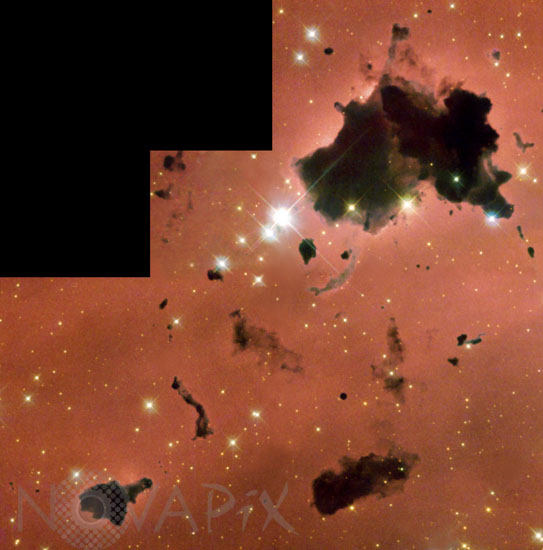Photo Agency - Astronomy - Space - Nature

Bok Globules in IC 2944 in Centaurus
author: Nasa/Hubble heritage team/Novapix
reference: a-nec29-44002
Image Size 300 DPI: 12 * 12 cm
These dense, opaque dust clouds - known as "globules" - are silhouetted against nearby bright stars in the busy star-forming region, IC 2944. These globules were first found in IC 2944 by astronomer A.D. Thackeray in 1950. Although globules like these have been known since Dutch-American astronomer Bart Bok first drew attention to such objects in 1947, little is still known about their origin and nature, except that they are generally associated with large hydrogen-emitting star-formation regions, called "HII regions" due to their glowing light of hydrogen gas. The largest of the globules in this image is actually two separate clouds that gently overlap along our line of sight. Each cloud is nearly 1.4 light-years (50 arcseconds) along its longest dimension, and collectively, they contain enough material to equal over 15 solar masses. IC 2944, the surrounding HII region, is filled with gas and dust that is illuminated and heated by a loose cluster of O-type stars. These stars are much hotter and much more massive than our Sun. IC 2944 is relatively close by, located only 5900 light-years (1800 parsecs) away in the constellation Centaurus. The image was taken in February 1999 with Hubble's Wide Field Planetary Camera 2.
Contact : Stéphane Aubin +33-(0)9-51-26-53-76
© Novapix - All rights reserved


